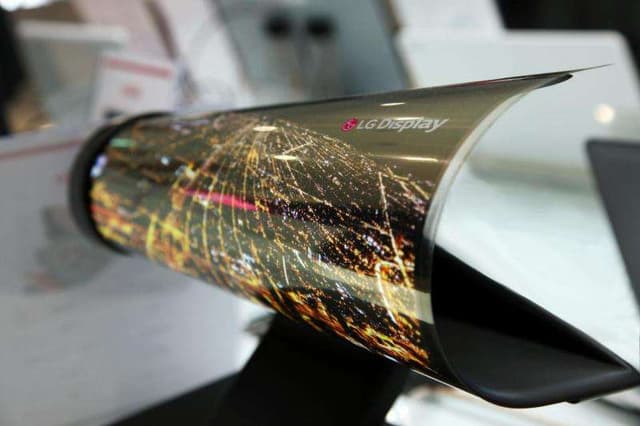In 2025, we’re stepping beyond screens. Smartphones, tablets, and laptops still exist, but the way we interact with digital content is fundamentally changing. Thanks to advances in spatial computing, we’re beginning to live in a world where technology doesn’t just sit on a desk or in your hand—it surrounds you.
Spatial computing blends augmented reality (AR), virtual reality (VR), artificial intelligence (AI), and sensor networks to create digital experiences that exist within physical space. And it’s not just about flashy headsets or sci-fi demos anymore. It’s in how we work, learn, play, heal, and connect.
This article explores how spatial computing is reshaping daily life in 2025—from the workplace and healthcare to entertainment and personal productivity—and what it means for the future of human-computer interaction.
1. What Is Spatial Computing, Really?
Spatial computing isn’t one single device or app. It’s a framework of interaction, where digital content is mapped to the physical world. Imagine:
Designing a room by dragging and dropping furniture in 3D using hand gestures.
Receiving real-time instructions from a virtual assistant projected onto your workspace.
Collaborating with remote teammates as if they’re sitting next to you via shared spatial environments.
The core technologies include:
AR/VR wearables with advanced environmental mapping.
Lidar and depth sensors to interpret 3D space.
AI engines that contextualize user behavior.
Edge computing to process data instantly, close to where it’s generated.
In 2025, the hardware has finally caught up with the vision.
2. Workspaces Without Borders
Forget Zoom fatigue. In 2025, spatial computing has redefined what it means to “go to work.”
Employees don AR glasses or lightweight spatial headsets to enter shared virtual workspaces. Whiteboards float in midair. Data dashboards wrap around the room. Teammates from Tokyo, Toronto, and Berlin appear as volumetric avatars, collaborating in real time.
Meetings feel more like presence than performance. Eye contact, body language, and even spatial audio cues bring back the nuance that 2D screens stripped away.
Startups and creatives are also embracing immersive co-creation. Designers can sculpt prototypes in real space. Architects walk clients through virtual buildings before the first brick is laid. Marketers pitch in 3D storyboards. Productivity isn’t just measured in output—but in immersion.
3. Education Comes Alive
In classrooms powered by spatial tech, learning is no longer passive.
History students stand in the middle of a Roman forum. Biology students explore cellular structures from within. Physics lessons unfold in interactive simulations where gravity, friction, and light behave in real time.
More importantly, personalized learning environments adapt to each student’s pace and style. AI companions provide contextual help. AR overlays support accessibility, translating content into gestures, audio, or multiple languages.
This kind of learning sticks—because it’s experiential, not just informational.
4. Healthcare Reimagined in 3D
Spatial computing is revolutionizing both patient care and medical training.
Surgeons now practice complex procedures in hyper-realistic VR simulations, reducing error rates. Doctors use AR to view layered data—X-rays, patient vitals, and surgical guides—directly over the patient’s body.
At home, patients use immersive therapy tools. Stroke survivors regain mobility through gamified spatial exercises. Mental health patients enter calming VR environments for guided meditation or trauma therapy.
Spatial computing makes medicine more precise, more interactive, and—most importantly—more human-centered.
5. Entertainment Gets Immersive
Movies, games, and music have entered an entirely new dimension.
Concerts now happen in shared virtual arenas, where fans around the world gather as avatars with synchronized lighting, crowd effects, and proximity-based audio. Video games don’t just take place on screens—they unfold in your living room.
Directors are creating spatial cinema—films where the viewer walks through the narrative, choosing perspectives and interacting with characters.
Meanwhile, AI-generated experiences adapt in real time to viewer emotion, movement, or voice commands. Entertainment is no longer consumed—it’s inhabited.
6. Shopping in 3D Space
In 2025, spatial commerce is booming.
Instead of browsing thumbnails, shoppers walk through virtual showrooms or scan AR previews of furniture, fashion, or electronics in their own homes.
Try-on tech is incredibly accurate—mapping body dimensions, skin tone, and movement for realistic previews. Stores use holographic sales assistants powered by AI to guide users through purchases.
This shift is also democratizing retail. Small businesses without physical storefronts can now create immersive digital boutiques—leveling the playing field in a visually-driven economy.
7. Smart Homes, Spatially Aware
Your smart home doesn’t just respond to voice commands—it understands space.
In 2025, spatial computing integrates with smart homes to create environments that are responsive to presence, movement, and context. Lights follow your path. Music adjusts to room occupancy. Your fridge highlights missing ingredients as you glance at it.
AR overlays show reminders on your wall. Your home gym projects live feedback on form and progress. And thanks to spatial routines, devices collaborate: blinds close, lights dim, and white noise plays as you enter sleep mode.
The home becomes a living system—quietly aware and adaptively helpful.
8. Privacy in a Spatial World
Of course, with immersive tech comes new questions.
What happens when your headset sees everything you see? When your living room becomes a sensor-laden platform? When eye tracking, facial expressions, and spatial habits become data points?
In 2025, privacy frameworks are evolving fast. Devices feature opt-in transparency layers, on-device processing, and zone-based privacy modes. Companies are required to disclose spatial data use with extreme clarity.
Still, it’s a delicate balance. The industry is learning that trust is the ultimate interface—and users demand control over their digital environments.
9. Design for the Body, Not the Device
One key lesson of spatial computing’s rise: the body is the new interface.
Designers are moving away from menus and buttons and toward gestures, gaze, posture, and voice. Interactions feel natural—because they’re rooted in how humans already navigate space.
This shift also invites inclusivity. Interfaces adapt to different abilities, sensory profiles, and cultural norms. And instead of adapting ourselves to screens, the technology adapts to us.
10. The Dawn of Spatial Social Life
Friendships, dating, family rituals—they’re all being reimagined.
People host dinners in hybrid spaces: some guests at the table, others beamed in via volumetric projection. Friends hang out in virtual lounges where body language and presence matter. Long-distance couples share mixed-reality rituals—watching sunsets “together” in synchronized worlds.
Even funerals, weddings, and religious gatherings are finding space in spatial computing. Presence is no longer defined by proximity, but by connection.
Toward a World That Feels
Spatial computing is not just a technological trend—it’s a paradigm shift.
It blurs the lines between digital and physical, redefines how we interact with information, and challenges us to build systems that prioritize experience over efficiency.
But it also asks more of us. It demands thoughtful design, strong ethics, and a vision that centers the human experience. In 2025, we’re not just building smarter tech—we’re building tech that feels.
The screen is fading. The world is glowing.
Loading...



